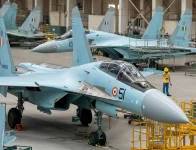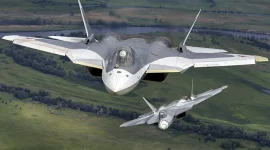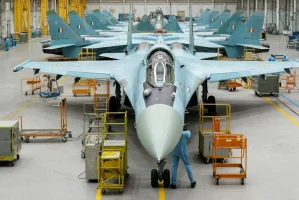- Views: 2K
- Replies: 7
Hindustan Aeronautics Limited (HAL) has achieved a significant milestone in its Tejas program with the completion of the Nashik production line for the advanced Tejas Mk1A fighter jet. This new facility is poised to significantly ramp up production, aiming to deliver eight jets annually, with the first aircraft rollout expected in March 2025.
This development marks a major step forward for India's indigenous defence manufacturing capabilities. The Nashik plant, inaugurated in 2023, will become the third production line for the Light Combat Aircraft (LCA), joining HAL's two existing facilities in Bengaluru. Each line is projected to produce eight Tejas Mk1A aircraft per year, significantly boosting the Indian Air Force's (IAF) combat fleet.
The Tejas Mk1A boasts several advancements over its predecessor, including enhanced avionics, an Active Electronically Scanned Array (AESA) radar, advanced electronic warfare systems, and reduced turnaround time for maintenance. These upgrades are crucial for modern aerial warfare and will significantly enhance the IAF's operational capabilities.
While the Nashik plant is nearing completion, the Tejas Mk1A project has faced some delays due to supply chain disruptions, particularly in sourcing engines from the United States. Despite these challenges, HAL has ensured that its production infrastructure remains on schedule to avoid further delays once the supply chain issues are resolved.
The Nashik facility also plays a vital role in upgrading and producing the Sukhoi Su-30 MKI, a mainstay of the IAF's fleet. This dual focus highlights the plant's importance in strengthening India's air defence capabilities.
The induction of the Tejas Mk1A comes at a crucial juncture for the IAF, which is facing challenges with its declining fighter squadron strength. The IAF signed a significant deal with HAL in February 2021 for 83 Mk1A fighters, and deliveries are expected to commence in 2025, with full-scale production supported by the facilities in Bengaluru and Nashik.
The Tejas Mk1A, produced at this state-of-the-art facility, will play a crucial role in bolstering the IAF's combat capabilities and ensuring India's air superiority in the years to come.



